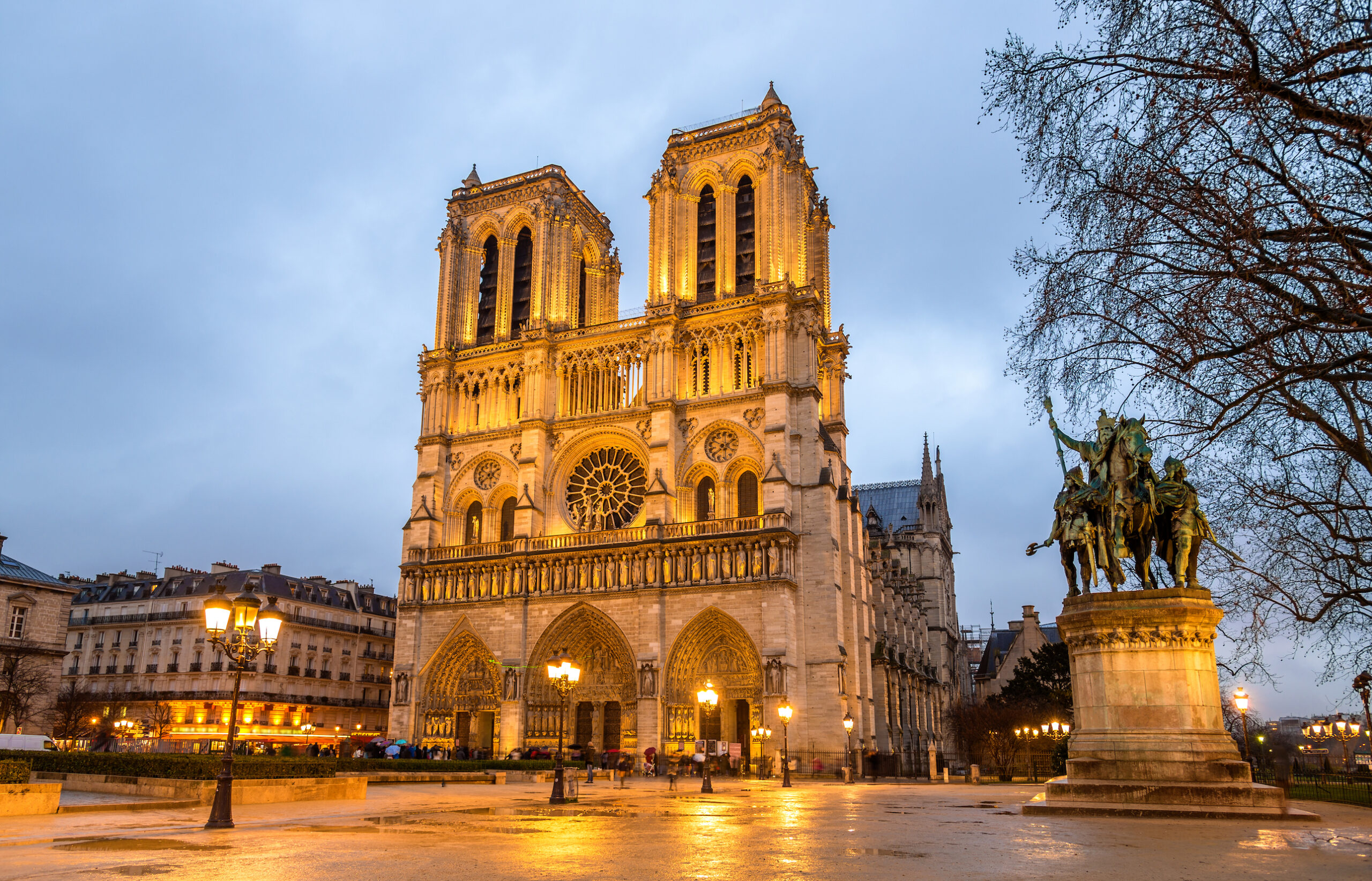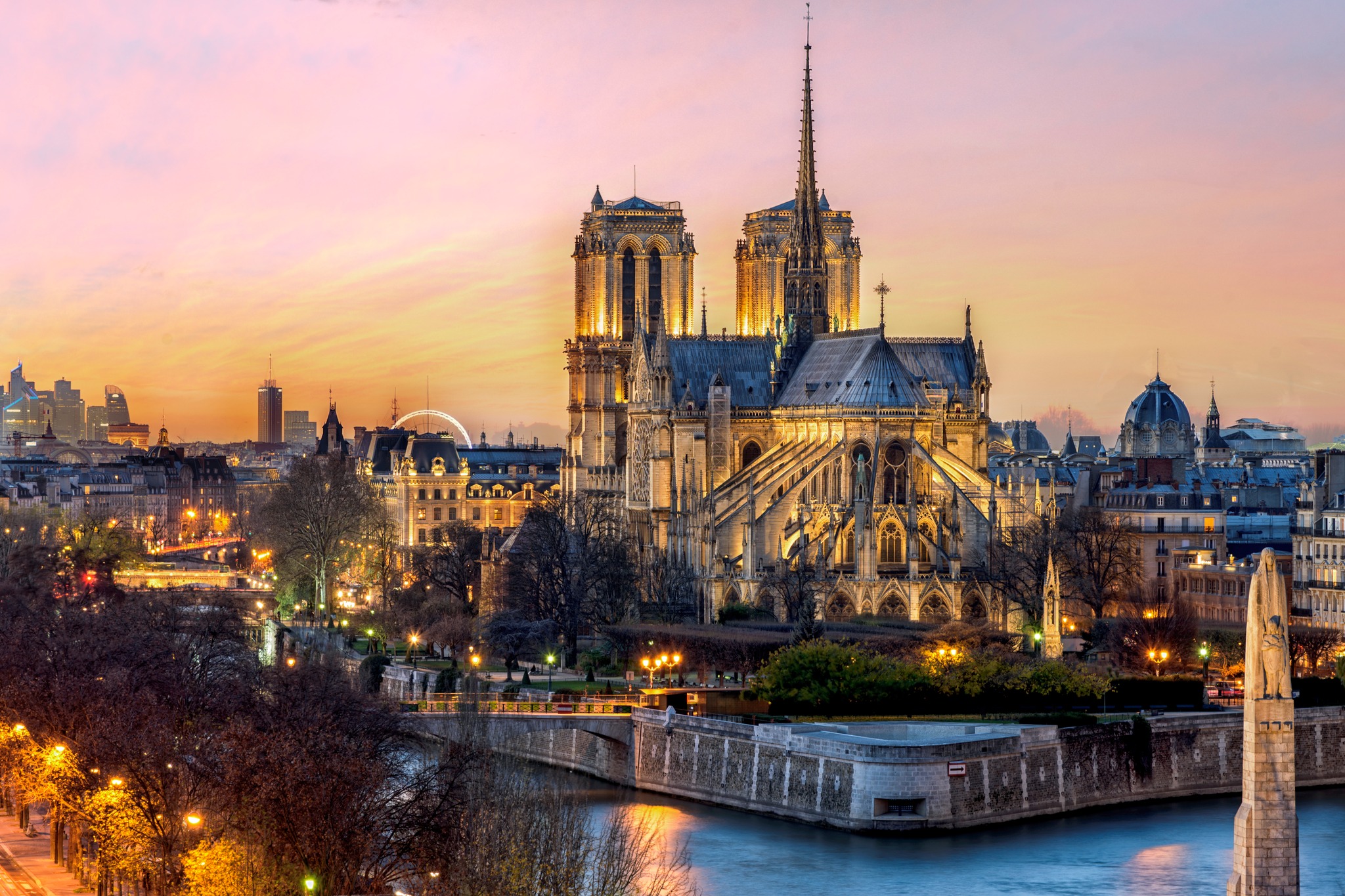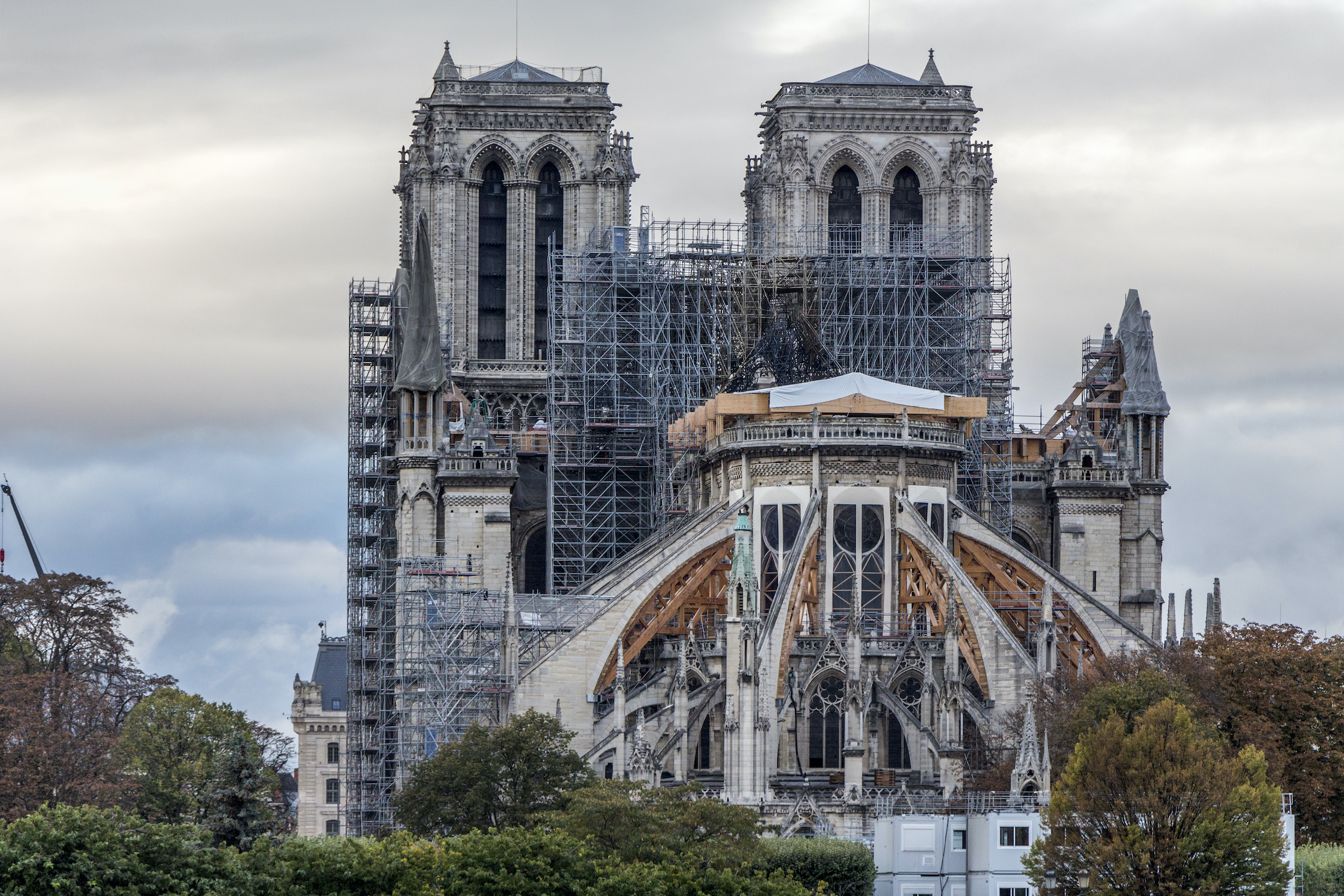
Notre Dame de Paris, commonly known as Notre Dame, is a medieval Catholic cathedral situated on the Île de la Cité in Paris, France. The cornerstone was laid in 1163 during the reign of King Louis VII, and the construction was largely completed by 1345. It stands as one of the finest examples of French Gothic architecture, noted for its grandeur, historical significance, and architectural innovation.
Architectural Highlights
Notre Dame’s architecture is distinguished by its use of the pointed arch, ribbed vaults, and flying buttresses, which enabled the construction of higher and thinner walls adorned with large windows. The cathedral is renowned for its iconic twin towers, each standing 69 meters tall, and its famous rose windows. The west facade, featuring three intricately adorned portals and a central rose window, is particularly celebrated.
Religious Significance
For centuries, Notre Dame has served as a pivotal religious site in Paris, acting as the cathedral of the Archdiocese of Paris. It has hosted numerous significant events, such as the coronation of Napoleon I in 1804 and the beatification of Joan of Arc in 1909. It continues to be a place of pilgrimage and worship, regularly holding services including the notable Easter and Christmas masses.

Cultural Transformation
Notre Dame has evolved into a symbol of French national identity and culture over the years. Victor Hugo’s 1831 novel, “The Hunchback of Notre-Dame,” brought significant attention to the cathedral’s deteriorating condition, sparking a mid-19th century restoration led by Eugène Viollet-le-Duc. The novel’s popularity cemented Notre Dame’s status as a cultural icon, ensuring its preservation.
The 2019 Fire
On April 15, 2019, a catastrophic fire erupted at Notre Dame, causing extensive damage. The fire destroyed the cathedral’s spire, roof, and much of the wooden latticework known as “the forest.” Despite this, the main structure, including the two towers and numerous priceless artifacts and relics, were preserved due to the efforts of the firefighters.

Restoration Efforts
Following the fire, the French government and private donors pledged substantial funds for the restoration of Notre Dame. The restoration work began with stabilizing the structure and clearing debris, aiming to restore the cathedral using traditional techniques and materials. President Emmanuel Macron initially set a five-year goal for the restoration, targeting a reopening in time for the 2024 Summer Olympics in Paris. In the days following the fire, over €800 million (approximately $900 million) was pledged from various donors, including private individuals, corporations, and institutions. Notable contributions included:
- €200 million from the LVMH Group
- €100 million from the Kering conglomerate
- €200 million from the Bettencourt Meyers family of the L’Oréal Group
- €100 million from the oil company Total

Additional funds from the city of Paris and the French government These donations, alongside numerous smaller contributions, underscored the global cultural and historical importance of Notre Dame. Reopening Prospects Restoring Notre Dame de Paris is a monumental and intricate endeavor. Although there is an ambitious goal to complete the work by the end of 2024, unforeseen challenges and the detailed nature of the restoration process may impact this timeline. The cathedral is expected to reopen for services and visits by 2024, but restoration efforts will likely continue beyond this date to ensure the comprehensive preservation of this architectural and cultural masterpiece.
